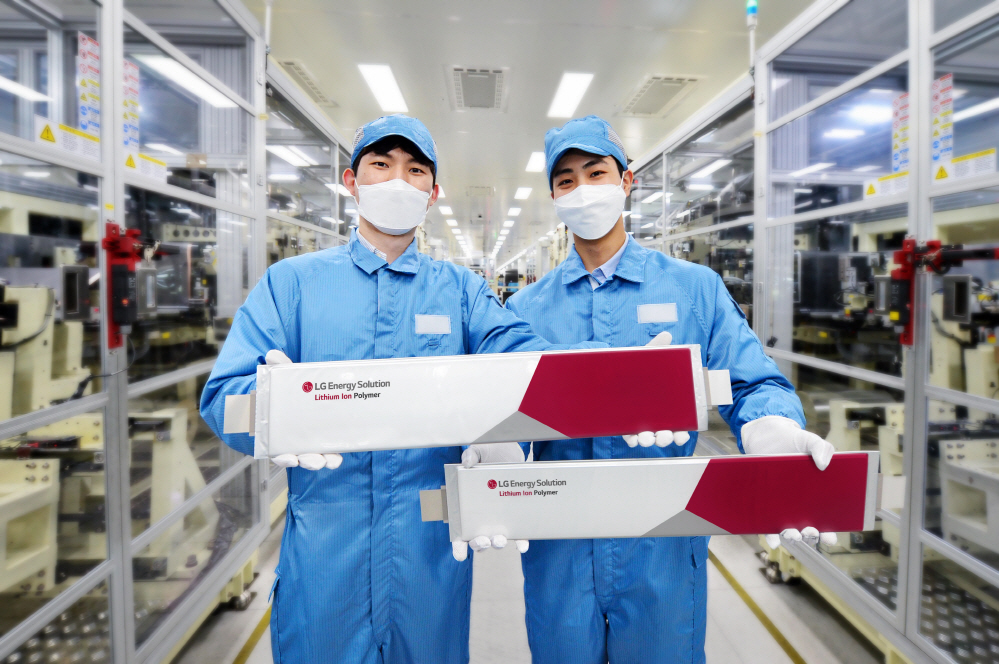 |
Engineers show Long Cell batteries developed by LG Energy Solution’s Ochang factory in North Chungcheong Province.(LGES) |
LG Energy Solution was listed on the main Kospi bourse in January, 30 years after the company took its first step as a pioneer in the rechargeable battery business in 1992.
Its next goal is to become “a company that is trusted and loved by customers.”
LG Energy Solution’s initial public offering set several records, raising capital of more than 10 trillion won ($8.3 billion) and attracting 114.1 trillion won in deposits from some 4.4 million retail investors.
As the first Korean company to have begun research on storage batteries, LGES has invested 5.3 trillion won in research and development over the past 10 years, and as a result, owns some 22,900 patents in materials, process and core technologies.
With about 3,300 research and development personnel around the world and R&D centers in Korea, China, the US and Europe, LGES owns intellectual properties in not just cells, but also in battery packs and battery management systems.
“It is virtually impossible to develop new batteries independent from LGES’ patents,” an official in the battery industry said.
The “world’s first” technologies and products developed by LGES include a double-layer coating technology that reduces battery charging time, high-nickel NCM (nickel-cobalt-manganese) positive electrode materials and silicon anode materials.
The company also owns various battery platforms from small to large, cylindrical, prismatic and pouch, allowing it to meet customers’ price and performance demands.
Among global secondary cell manufacturers, LGES has the largest global production system.
LGES and General Motors Co. last month unveiled a $2.6 billion plan to build a new electric vehicle battery plant with an annual production capacity of 50 gigawatt hours in the US.
The new factory to be built in Lansing, Michigan, by 2024 will be the two companies’ third joint plant after the first in Ohio and the second in Tennessee, both currently under construction and aiming for annual production capacities of over 35 GWh each.
LGES is also running its own or joint EV factories in Korea, North America, China, Poland and Indonesia to minimize logistics costs and quickly respond to changes in local policy and markets.
Having raised some 10.2 trillion won through the recent IPO, LGES plans to invest 5.6 trillion won in North America, 1.4 trillion won in Europe and 1.2 trillion won in China by 2024, and 645 billion won in Korea by 2023 to expand production capacity.
With a strong commitment to environmental, social and corporate governance, LGES is taking steps to introduce renewable energy to drastically cut energy use and minimize greenhouse gas emission in the battery production process.
The company was the first in the industry to join global environmental campaigns RE100 and EV100.
“We are going forward with various battery recycling and reuse projects to establish a virtuous cycle of resources in all of our workplaces worldwide,” LGES vice chairman Kwon Young-soo said.
“For responsible management of supply chains, we will diversify product development and supply sources, and recruit talent regardless of nationality, gender or disability for diversity.”
By Kim So-hyun (
sophie@heraldcorp.com)






![[Out of the Shadows] Seoul room clubs offer drugs to compete for clientele](http://res.heraldm.com/phpwas/restmb_idxmake.php?idx=644&simg=/content/image/2024/11/05/20241105050566_0.jpg)

